Māori Beech Strawberry: Cyttaria gunnii Season at Nelson Lakes
This past week I found hundreds of Cyttaria gunnii growing from Nothofagus menziesii.
This past week I hiked along Lake Rotoiti in St. Arnaud, following the shoreline where the track sits between mossy roots and silvered trunks. Somewhere along the way I found myself thinking about Cyttaria gunnii, a parasitic fungus that grows like tiny honeycomb oranges on southern beech.
It’s a species I’ve come across before in the Fiordlands and Kahurangi. The thought barely formed when I immediately spotted them: first one, then dozens scattered across the side of the track.
Cyttaria gunnii is also called the myrtle beech orange or Māori beech strawberry. I even found one with a red tip, so I can see where it’d get the latter common name.
It’s an edible ascomycete that produces soft, jelly-like spheres in colors that range close to lemon to deep amber. The species occurs across the southern temperate world: New Zealand, Tasmania, southern Victoria, and the forests of Patagonia, but each population is bound to its host.
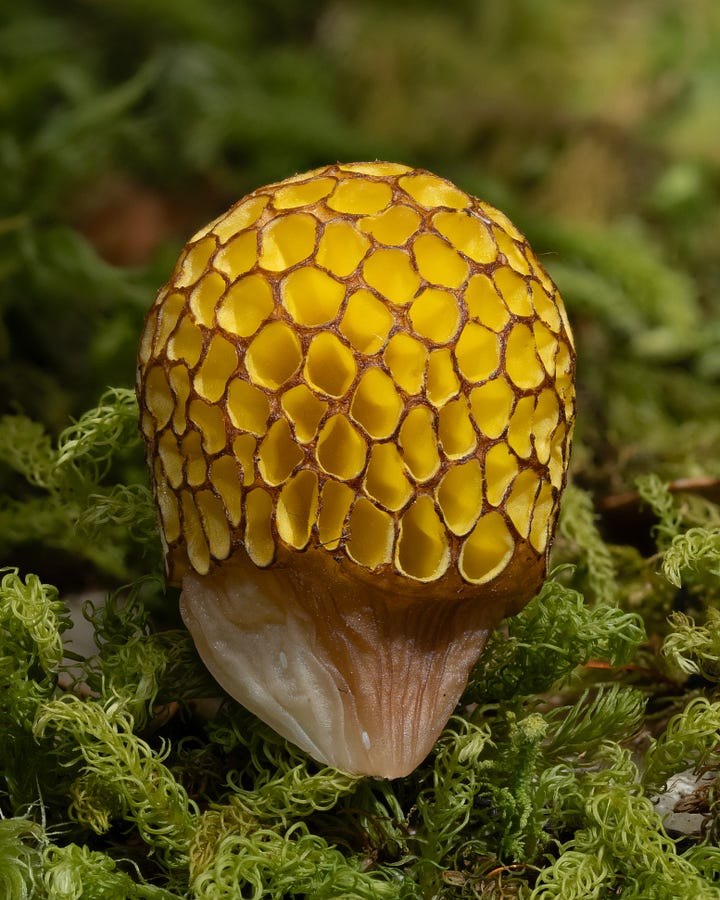
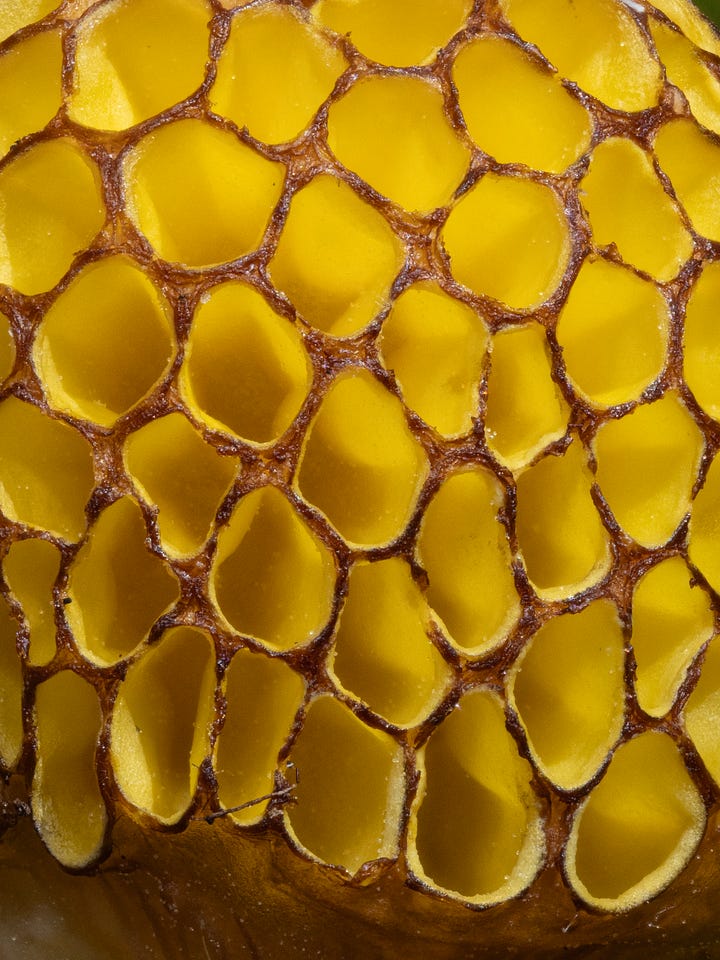
In Aotearoa, that host is the silver beech, Nothofagus menziesii. In Australia, its counterpart lives on myrtle beech, N. cunninghamii.
The relationship between Cyttaria and Nothofagus is a Gondwanan story with every species of Cyttaria tied to a single beech lineage. These fungi can’t live anywhere else (they’re true parasites, not mutualists) and feed from living tissues that shape the trees in return.
This chonker is the most massive cluster of Cyttaria nigra galls I’ve seen before covering a silver beech next to Flora Hut in Kahurangi National Park.

You can tell where a tree’s been infected. The fungus grows within the wood and forms galls. Each season, soft fruiting bodies erupt from the gall’s surface and these globose, honeycombed spheres grow up to a couple of centimeters wide.
When fresh, they’re pale cream and smooth; as they mature, the surface splits into a pattern of tiny holes, each a spore-bearing cup.
As I collected some in my hand, when I opened to inspect, a massive cloud of white spores shot out like a smoke bomb. Each pit (locule) contains asci that forcibly launch spores into the air.
The forest around Lake Rotoiti was full of them that day (the typical season is between late October to January here). The galls bulged from branches and trunks, and the bright stromata clung in clusters.
Some had red-tipped pigments, like miniature strawberries. I’d read that this could come from environmental stress caused by sunlight, cold, or dry air changing the pigment similar to autumn leaves reddening as chlorophyll breaks down.
The more I looked, the more I saw: yellow-orange dots everywhere.
In South America, the relatives of this species are well known: Cyttaria hariotii and C. darwinii, the famous “llao llao” or “Darwin’s golfball fungus.” They’re eaten raw, turned into jams, or fermented into sweet local drinks.
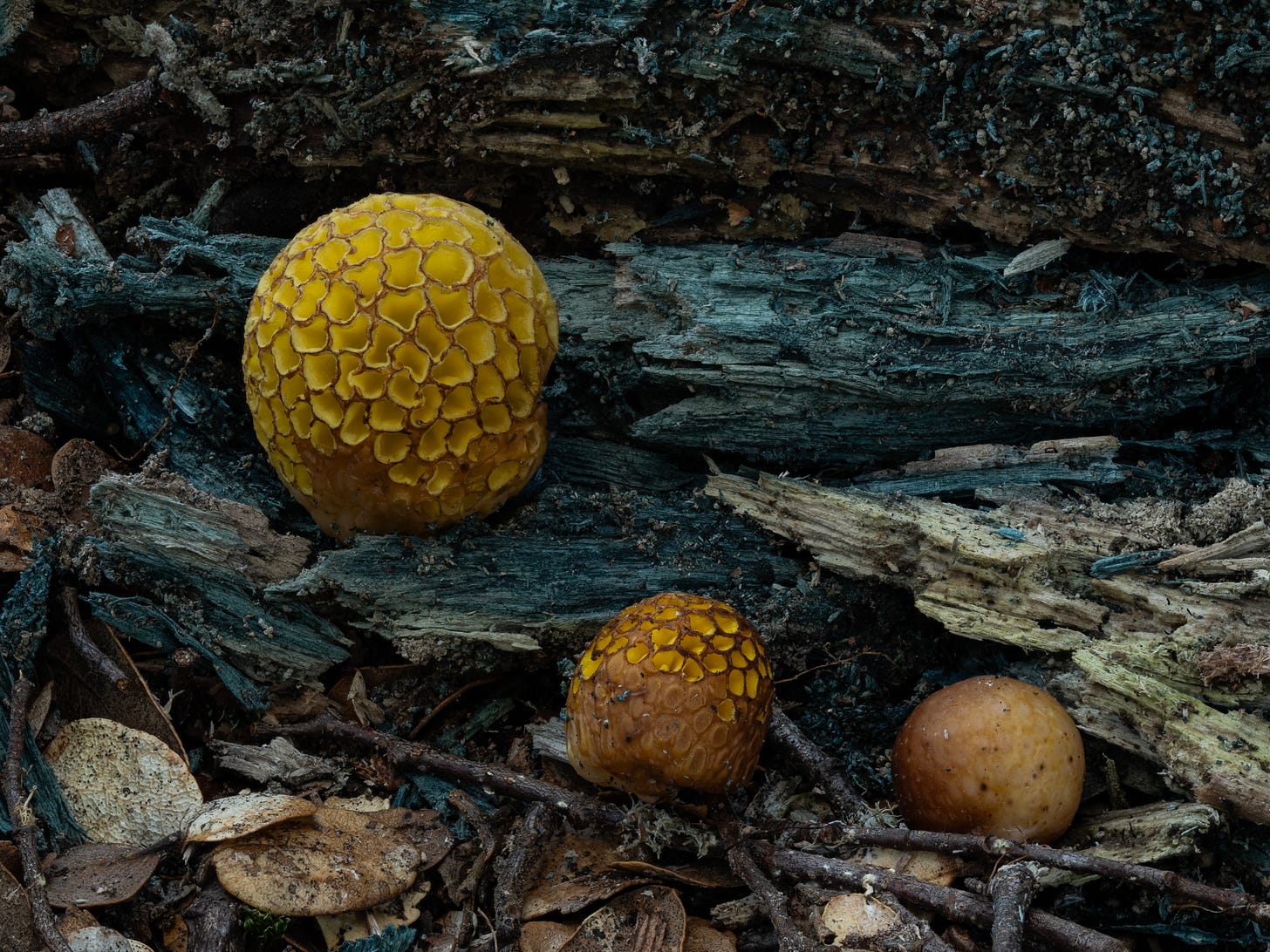
In Tasmania, C. gunnii is recorded as part of First Nations bush foods. Here in New Zealand, it’s technically edible but rarely gathered. I tried a small one, more out of curiosity: mild, faintly sweet, with the texture of soft jelly.
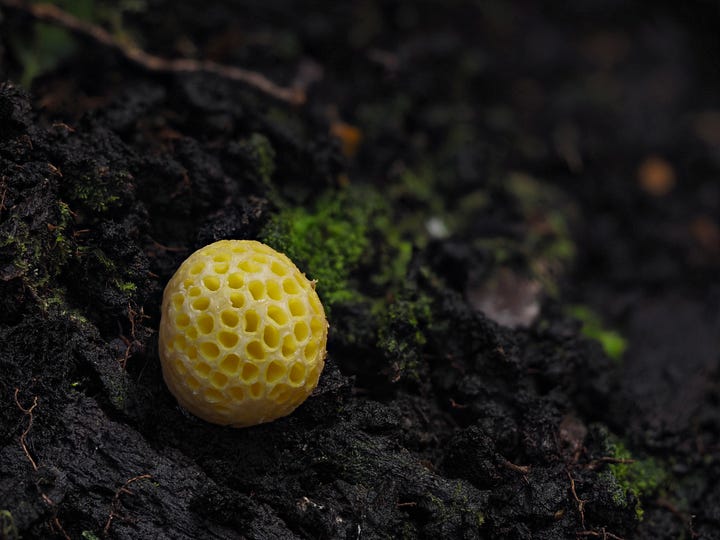
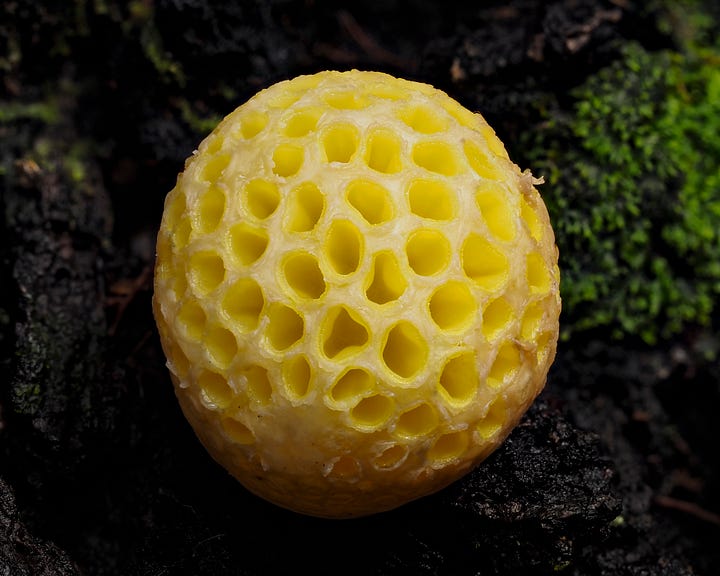
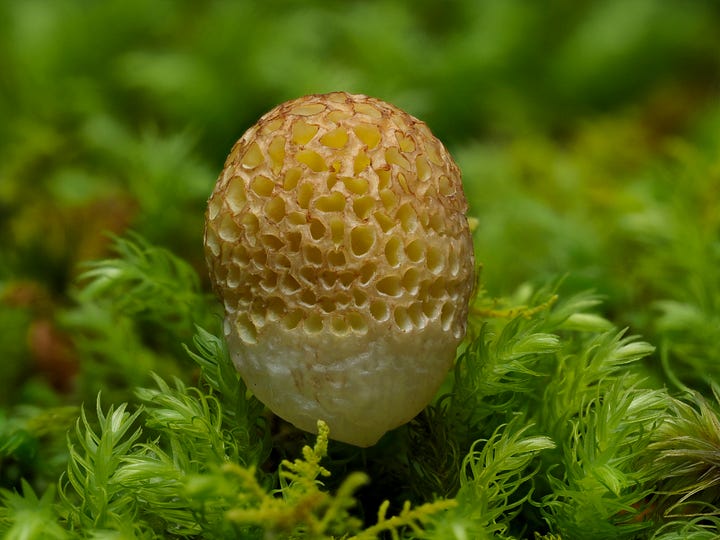
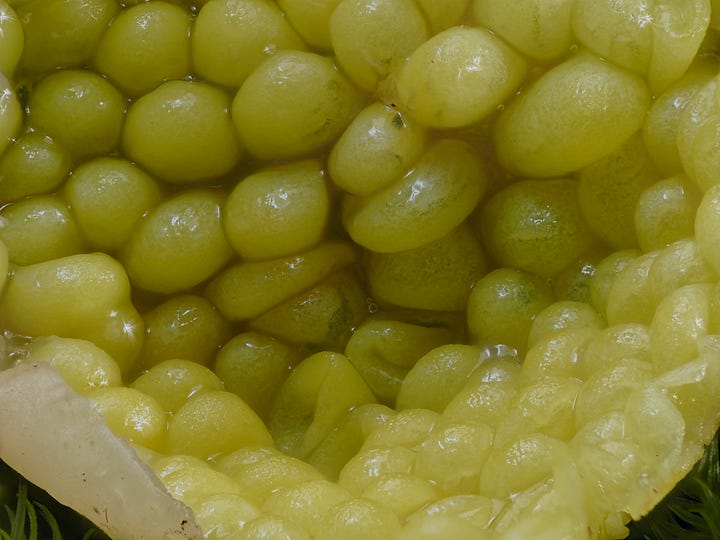
It’s always a pleasant surprise to spot these beech oranges out on the trail. They seem to appear just when you start thinking about them. I’ll be keeping an eye out for more as the season continues, especially the red-tipped ones that look like tiny strawberries.



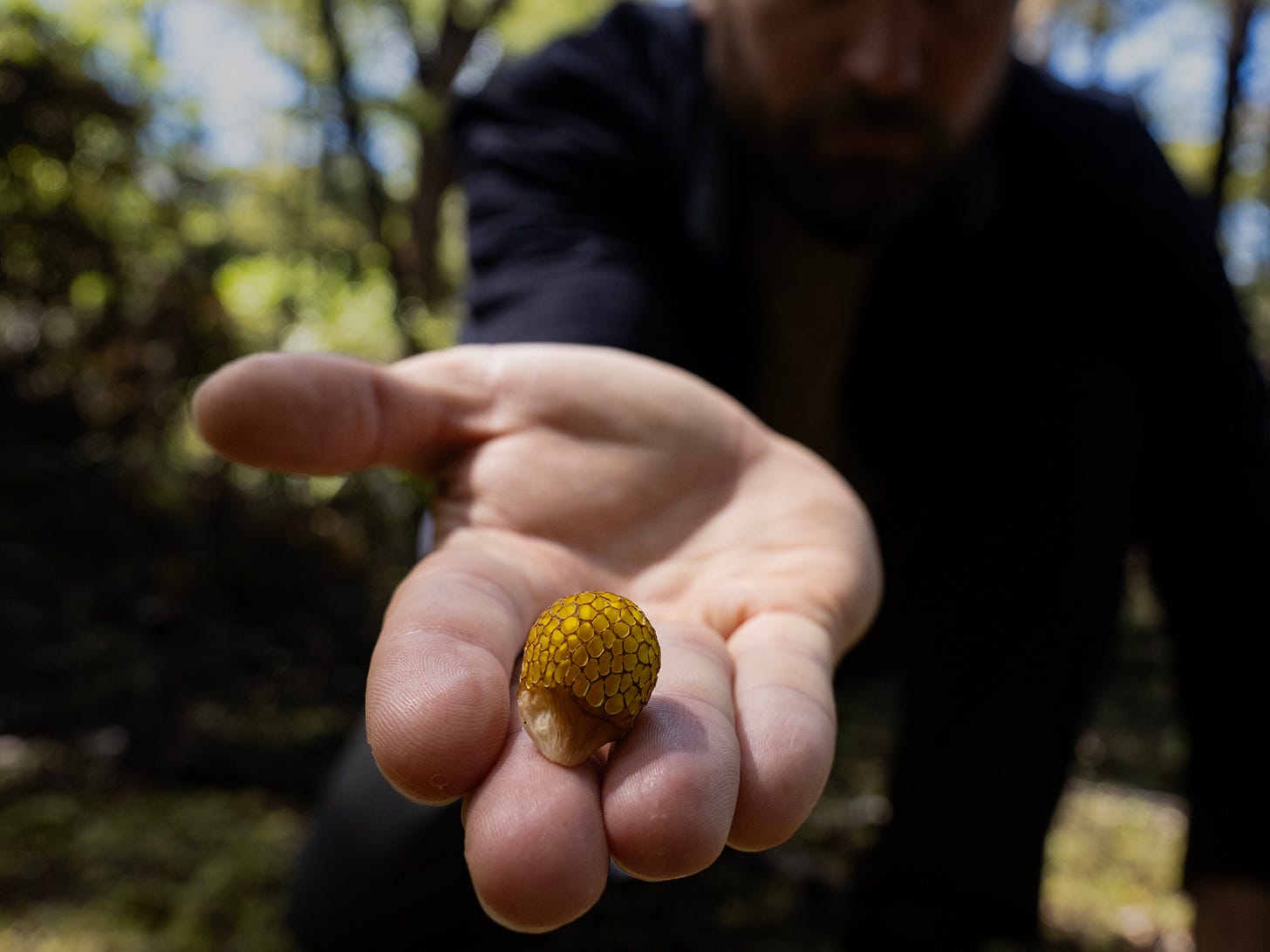
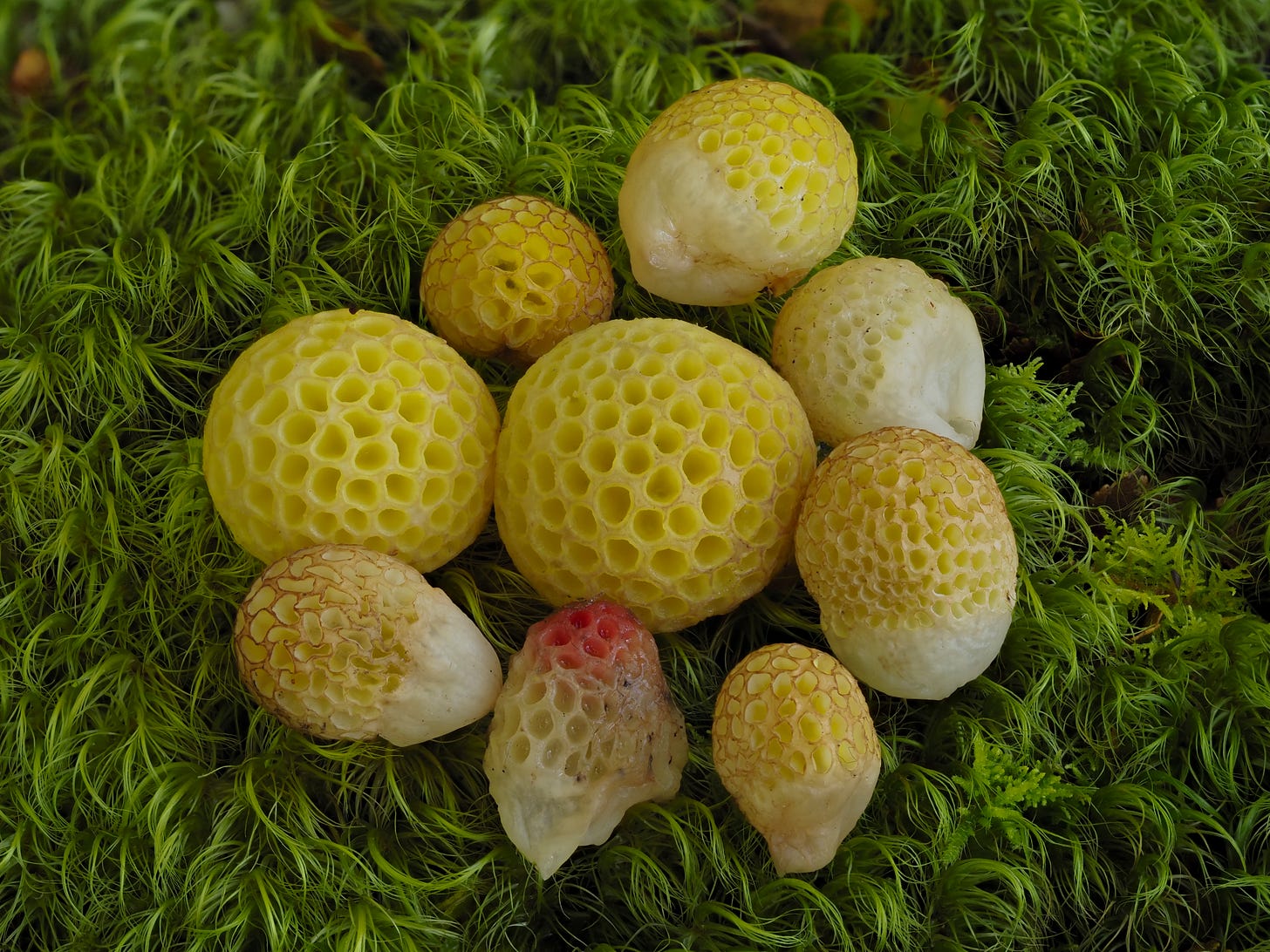
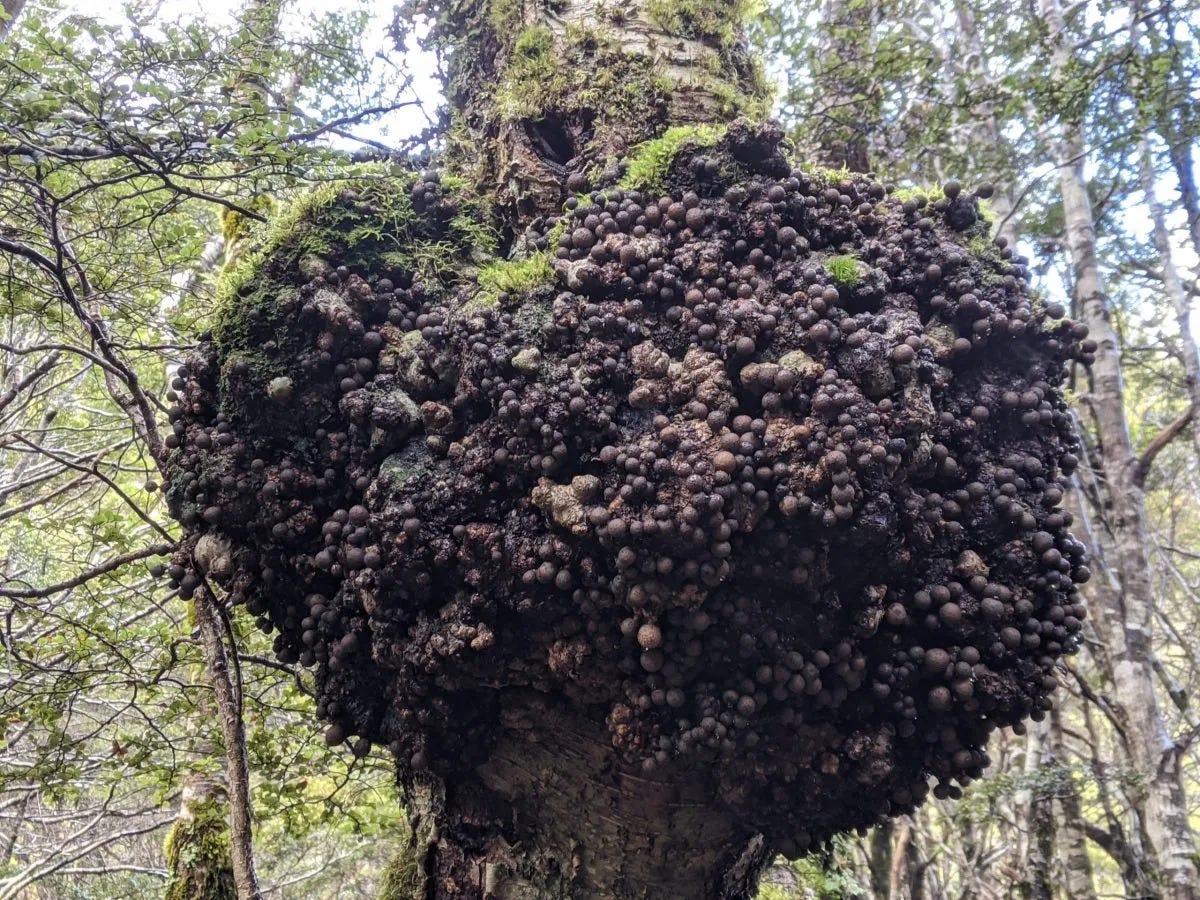
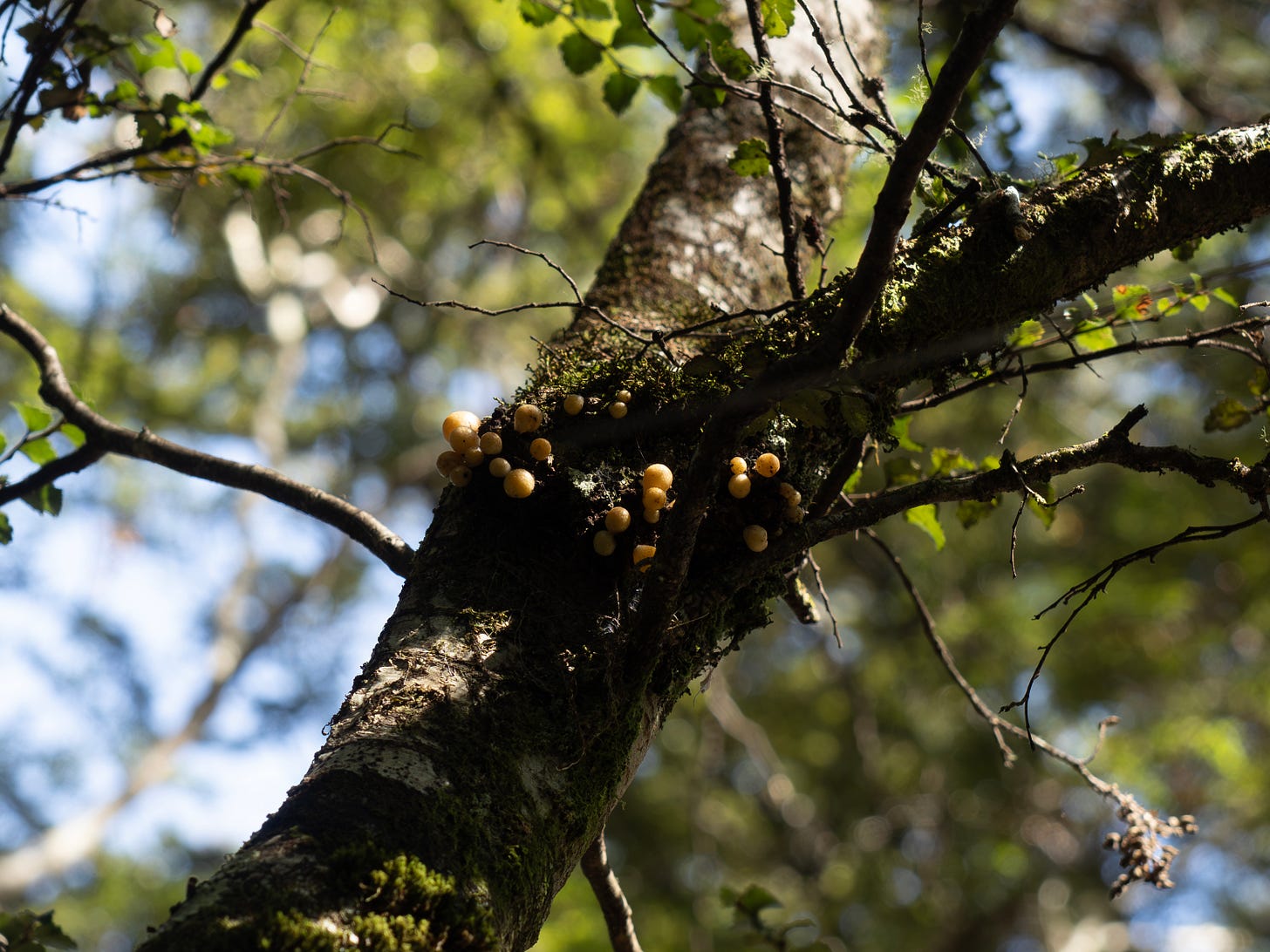


Wow: these are truly epic, love them all. Thank you for sharing and let us to know. 🍄🟫
Love the lakes scene with the sunset too, sooo beautiful! 🌅
Wow! So cool! I’ll check the trees in my local botanic gardens to see if they grow as far north as Canberra. Thank you! Love all the photographs too.